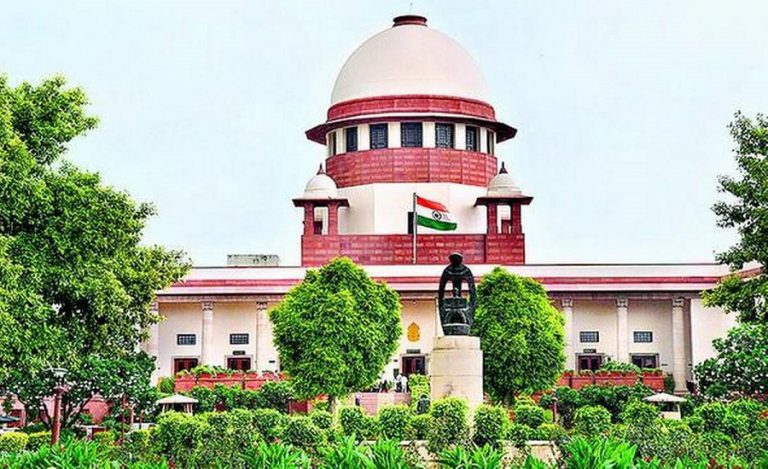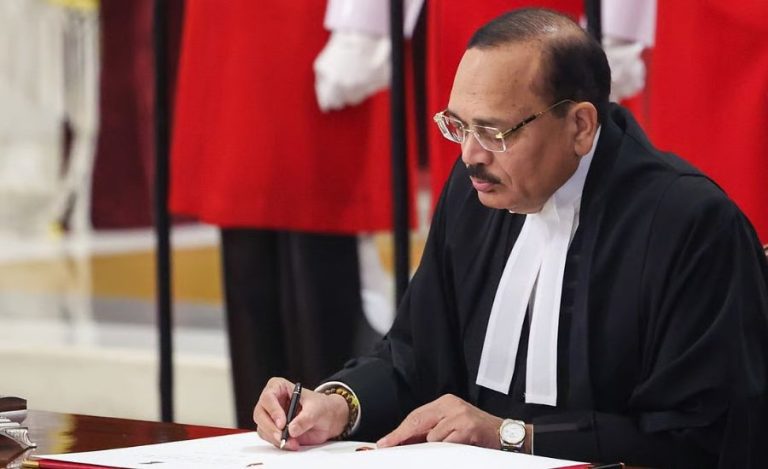When the Pradhan Mantri Bhartiya Janaushadhi Pariyojana (PMBJP) was launched more than a decade ago, its purpose was simple yet ambitious: make high-quality generic medicines accessible to every Indian at the lowest possible price. Few could have predicted that the same initiative would one day evolve into one of India’s fastest-growing grassroots entrepreneurship movements, offering sustainable income, new economic opportunities, and dignity of service to thousands of citizens across the country.
What began as a public health intervention is today a dual-purpose national mission a lifeline for patients, and an emerging livelihood engine for youth, women, ex-servicemen, and aspirational districts. With 16,955 Janaushadhi Kendras already operational as of October 2025, and a target of 20,000 stores by March 2026 and 25,000 by March 2027, the scheme is expanding at a scale few government programs have witnessed.
Now, with margins expected to rise to 27% on MRP (excluding tax) for medicine sales, entrepreneurs running Janaushadhi stores stand at the threshold of a transformative moment.
Affordable medicine, assured quality, stable income Janaushadhi today is not just a scheme; it is an inclusive movement.
THE NEW BUSINESS OPPORTUNITY: ‘SASTI BHI, KAMAI BHI’
For thousands of young entrepreneurs, housewives, pharmacists, ex-servicemen, and small business owners, PMBJP has quietly become a gateway to entrepreneurship.
Sources indicate that the government is considering a revision of margins, under which entrepreneurs may soon receive up to 27% profit on the MRP of medicines (excluding tax). This means –
- On a medicine priced at ₹100,
- ₹27 would be the entrepreneur’s income.
This upgraded margin is being seen as a major boost, especially for first-time business owners who want predictable income and low risk.
Why Janaushadhi is turning into a strong business model
- 20% existing margin on MRP already ensures regular monthly income.
- Special incentives up to ₹2 lakh for women, SC/ST, ex-servicemen, Divyangs, aspirational districts, Himalayan and island regions.
- Additional monthly incentive up to ₹20,000 under the stocking and purchase mandate.
- Zero franchise fee and no profit-sharing with any private entity.
- High-volume demand because medicines are priced 50% to 80% lower than branded alternatives.
A SCHEME THAT IS REDEFINING THE RETAIL PHARMACY ECOSYSTEM
PMBJP’s success lies not only in affordability but also in trust and transparency.
Prices that break market barriers
- Medicines under PMBJP are priced at maximum 50% of average price of top three branded medicines.
- In many cases, prices are 80% lower.
- 2110 medicines and 315 surgical items are now part of the growing basket.
This is not merely a price intervention it is a structural reform. By bringing down the cost of essential drugs such as anti-diabetics, cardiac drugs, antibiotics, analgesics, and even anti-cancer medicines, the government has created an alternative pharmaceutical narrative: quality doesn’t have to be expensive.
PATIENTS SPEAK: THE HUMAN FACE OF THE MEDICINE REVOLUTION
At the AIIMS OPD facility in New Delhi, the Janaushadhi Kendra has been operational for nearly a year. Patients routinely queue up for generic medicines that cost a fraction of their branded counterparts.
AIIMS Medical Superintendent Prof. Nirupam Madaan calls it “a positive step toward patient welfare.”
Visitors agree. For low-income families battling chronic diseases such as diabetes or hypertension which require lifelong medication PMBJP stores can reduce yearly medical costs by thousands of rupees. Many families say the savings can be redirected towards nutrition, education, or household stability.
One patient from Bihar says, “My father’s heart medicines cost ₹2,800 at a private pharmacy. Here, I get the same medicines for ₹500. This scheme has saved us from debt.”
SUPPLY CHAIN: INDIA’S SPINE OF AFFORDABLE MEDICINE
Behind the counter of every Janaushadhi Kendra lies a massive, technology-driven supply ecosystem one that ensures no store runs out of stock, and no patient leaves empty-handed.
Today, five warehouses – located in Gurugram, Guwahati, Surat, Chennai, and Bengaluru – form the backbone of the PMBJP supply chain. Together they –
- Maintain stock for 5.6–6 months at any given time.
- Use SAP-based inventory management for real-time demand forecasting.
- Are connected via Point-of-Sale (PoS) software to all Kendras.
- Follow stringent WHO-GMP quality assurance protocols.
- The Gurugram mega warehouse: India’s medicine logistics giant
Spread across 1,42,000 sq ft, this warehouse is the largest in the country dedicated to generic medicines. With –
- A cold-storage facility maintaining 2 to 8 degrees Celsius.
- Advanced vertical racks.
- Automated and semi-automated picking systems.. the warehouse symbolizes India’s shift to modern pharmaceutical logistics.
THE SIXTH WAREHOUSE: INDIA EXPANDS ITS MEDICAL GRID
Sources suggest that a sixth warehouse for Janaushadhi medicines and medical devices will soon be announced likely in Kolkata or Varanasi. This strategic expansion is expected to –
- Further reduce delivery timelines
- Strengthen supply across eastern and northern India
- Support the rising network of Kendras with seamless logistics
With a target of 25,000 Kendras by March 2027, this infrastructural expansion is not only timely, but critical.
QUALITY THAT MATCHES GLOBAL BENCHMARKS
In a country where the belief often is “expensive means better,” PMBJP has had to fight perception barriers. To counter this, a robust quality assurance system has been institutionalized –
- Medicines are procured only from WHO-GMP certified manufacturers.
- Every batch undergoes testing at NABL-accredited laboratories.
- Red-flagging and recall protocols are tightly implemented.
- Random sampling and periodic checks ensure sustained quality.
- This multi-layered system reinforces one message: low cost does not mean low quality.
TWELVE YEARS OF IMPACT: FROM 80 STORES TO 16,955
The numbers tell their own story.
Janaushadhi’s 11-year growth –
- 2014–15: 80 Kendras
- 2025: 16,955 Kendras (210 times growth)
Sales and savings –
- FY 2023–24 sales: ₹1470 crore
- FY 2024–25 sales: ₹2022.47 crore
- Citizen savings in 11 years: ₹40,000 crore+
The rise in sales corresponds to increased public trust. With every new Kendra, a new community gains access to life-changing affordability.
TURNING RURAL INDIA INTO NEW ENTREPRENEURIAL HUBS: PACS INTEGRATION
In one of the most groundbreaking steps, PMBJP has been integrated with Primary Agriculture Credit Societies (PACS).
- 4169 PACS have received initial approval.
- 799 PACS-run Kendras are already functioning.
This move allows PMBJP to penetrate remote and rural interiors, while giving PACS members an additional stream of sustainable income.
A FLAGSHIP OF WOMEN-LED DEVELOPMENT
The scheme is increasingly becoming a platform for women entrepreneurs, especially in aspirational districts and underserved regions.
The special one-time ₹2 lakh incentive (₹1.50 lakh for furniture, ₹0.50 lakh for computer & equipment) is proving transformative.
Numerous women pharmacists and homemakers have stepped into leadership roles, running successful Janaushadhi outlets while serving their communities.
JAN AUSHADHI SUVIDHA: WOMEN’S HEALTH AT ₹1 PER PAD
Launched in August 2019, the Janaushadhi Suvidha Oxy-Biodegradable Sanitary Napkin priced at just ₹1 is a landmark intervention in menstrual hygiene.
- Over 93.61 crore pads have been sold so far.
- Availability across all Kendras ensures low-cost hygiene access for women in both cities and villages.
- This singular product has increased footfall in many stores, further boosting the entrepreneurs’ business.
JAN AUSHADHI SUGAM — EMPOWERING PATIENTS DIGITALLY
More than 38 lakh Indians have downloaded the Janaushadhi Sugam app.
The app allows users to –
- Locate nearest Kendras via Google Maps.
- Compare generic and branded medicine prices.
- Check availability of specific medicines.
- Access product details and MRP.
- It is digital empowerment in the truest sense.
GOVERNMENT AS FACILITATOR, ENTREPRENEURS AS DRIVERS
One reason PMBJP has scaled successfully is its franchise-like model, which empowers individuals while maintaining centralized quality and supply control.
What entrepreneurs gain –
- High margin + incentives.
- Brand association with a trusted national scheme.
- Technical support and streamlined supply.
- Low investment and predictable growth.
Social respect – many say, “People call this Pradhan Mantri Ji Ki Dukan.”
What India gains –
- A network of affordable medicine outlets.
- Employment generation.
- Reduction in out-of-pocket expenditure.
- A more rational pharmaceutical market.
HOW TO START A JANAUSHADHI KENDRA: A PRACTICAL GUIDE FOR ASPIRING ENTREPRENEURS
Eligibility
- D. Pharma or B. Pharma degree (or employ a registered pharmacist).
- Individuals, women entrepreneurs, pharmacists, NGOs, trusts, societies, ex-servicemen all are eligible.
- Space Requirement
- Minimum 120 sq ft, owned or rented.
- Lease agreement or allotment letter required.
- Distance Policy
New Kendra should be 1 km away from an existing one.
Exception
- Inside district hospitals
- Within 500 metres of 100+ bed private hospitals
Incentives
- Up to ₹2 lakh one-time support.
- Up to ₹20,000 monthly incentive (10% for purchases + 10% for stocking compliance).
- 20% profit margin on MRP.
Application Fee
₹5,000 (non-refundable).
Waived for special category applicants (women, NE states, aspirational districts, SC/ST, Divyang, ex-servicemen).
Application Process
- Visit janaushadhi.gov.in
- Go to “Apply for Kendra”
- Register and upload documents
- Submit pharmacist certificate, ID proofs, address proofs
- Pay fees (if applicable)
The process is transparent and digital.
STOCKING MANDATE: A NEW AGE OF RESPONSIBLE ENTREPRENEURSHIP
Stocking medicines responsibly ensures availability for patients and brings incentives for store owners –
- 180–200 medicines available → 100% incentive
- 150–179 → 80% incentive
- 100–149 → 50% incentive
- Below 100 → No incentive
This ensures that Kendras remain reliable sources of essential medicines at all times.
THE EVOLUTION OF PRODUCT BASKET
Year after year, PMBJP expands its product range based on market needs and expert recommendations.
Growth in product basket –
- 2021–22: 1450 medicines
- 2022–23: 1654
- 2023–24: 1866
- 2024–25: 2039
- 2025–26: 2110 medicines + 315 surgical items
New additions include –
- Nutraceuticals
- Protein powders
- Ayush products
- Oximeters, glucometers
- COVID-related diagnostics
- Pediatric formulations
The idea is clear: A one-stop affordable healthcare outlet.
AN EMERGING SOCIAL BRAND : “MODICINE” AND “PRADHAN MANTRI JI KI DUKAAN”
The growing popularity of Janaushadhi medicines has also given rise to new colloquial names –
- “Modicine” a phrase used affectionately by citizens and in media.
- “Pradhan Mantri Ji Ki Dukaan” a sign of respect and trust.
- When citizens themselves brand the initiative, it reflects deep acceptance and satisfaction.
A NATIONWIDE MOVEMENT: JAN AUSHADHI DIWAS
Every year, from 1–7 March, India celebrates Jan Aushadhi Week, culminating in Jan Aushadhi Diwas on 7 March.
The goal is to promote generic medicines, increase awareness, and celebrate entrepreneurs operating Kendras. Events across districts include –
- Health camps
- Awareness rallies
- Entrepreneurship sessions
- School programs
- Interaction with patients and beneficiaries
It has become a people’s festival of affordable healthcare.
THE ROAD AHEAD: GENERIC MEDICINE AS INDIA’S DEVELOPMENT PILLAR
As India’s population grows and healthcare needs intensify, affordability becomes central to welfare planning. PMBJP is set to play a historic role in –
- Reducing out-of-pocket expenditure (India has one of the world’s highest).
- Strengthening rural healthcare access.
- Creating 25,000 micro-entrepreneurs.
- Saving citizens tens of thousands of crores.
- Catalyzing rational drug use and prescription awareness.
The upcoming sixth warehouse, enhanced margins, increased incentives, digital app, and expansion deep into rural regions mark a new chapter of PMBJP one that aligns with Aatmanirbhar Bharat, women-led development, and equitable public health access.
The story of Janaushadhi is ultimately a story of dual transformation.
For patients, it is the difference between unaffordable bills and dignified care. For entrepreneurs, it is the difference between limited opportunities and sustainable income.
For the nation, it is a step toward rational healthcare and equitable development. As PMBJP moves toward 25,000 Kendras, Janaushadhi stands as a shining example of what India can achieve when public welfare, entrepreneurship, and strong governance come together. A revolution is unfolding – quietly, steadily, and powerfully. And it is improving lives, one affordable medicine at a time.




























